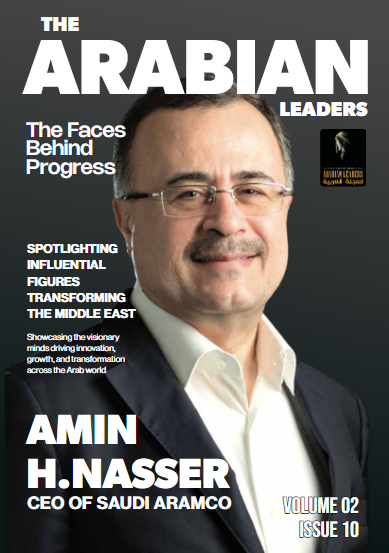As Saudi Arabia accelerates toward a future built on innovation, sustainability, and economic resilience, few institutions stand as centrally vital as the Public Investment Fund (PIF). While Vision 2030 provides the national blueprint, PIF serves as the mechanism that translates policy into measurable progress. This is no ordinary sovereign wealth fund—it is a multi-sector catalyst engineered to build industries, attract global capital, and reposition the Kingdom as a leading economic force of the 21st century.
The Governance Model: Strength in Structure
The success of PIF is not just about vision; it’s also about governance. As a sovereign wealth fund with vast capital responsibilities, it operates under a disciplined structure that balances executive agility with strategic oversight. The fund reports directly to the Council of Economic and Development Affairs, chaired by Crown Prince Mohammed bin Salman, but it also maintains its own Board of Directors that oversees planning, compliance, and risk.
The PIF governance framework includes:
- Board of Directors: Composed of senior government officials, independent experts, and economic advisors, this board sets strategic direction and oversees fund operations.
- Executive Management: Led by the Governor of PIF, the management team handles the execution of investment strategies, partnerships, and operational planning.
- Investment Committees: Internal committees evaluate and approve proposed deals, joint ventures, and development initiatives based on strict risk and return criteria.
- Compliance & Risk Units: These internal arms monitor performance metrics, ensure regulatory alignment, and conduct audits to maintain fiscal integrity and transparency.
This structure ensures that every riyal invested aligns with national goals while minimizing risk exposure—a critical balance for a fund of such scale and influence.
Growth Engine: From National Fund to Global Powerhouse
PIF has undergone one of the most remarkable transformations in modern sovereign finance. Originally established in 1971 as a domestic development fund, it operated for decades with a limited mandate. However, beginning in 2015, a rapid and deliberate restructuring process redefined its scope and ambition.
Key Milestones in Growth:
- 2016 Restructuring: The fund was transferred under the supervision of the Council of Economic and Development Affairs, enabling tighter integration with Vision 2030.
- Strategic Blueprint 2021–2025: Introduced to clearly define the fund’s priorities, including sector targets, asset growth benchmarks, and employment contribution goals.
- AUM Expansion: Grew from under $200 billion in 2016 to over $700 billion by 2024, with a roadmap to exceed $1 trillion in assets under management by 2025.
- International Ratings: PIF received positive credit ratings from international agencies, allowing it to raise capital through bond issuances, enhancing financial flexibility.
This growth has been fueled by a dual strategy: aggressive international investments and the creation of wholly owned local subsidiaries across key industries. As a result, PIF is no longer merely an allocator of capital—it is an industrial operator, infrastructure developer, and global investment firm.
Sectoral Mandates: Building the Future in Segments
To realize Vision 2030, PIF’s investment portfolio is strategically diversified across sectors that represent the future of the Saudi economy. While much attention is often given to its headline investments, the internal sectoral mandates reveal a highly detailed and measured approach to national transformation.
Key Focus Areas Include:
- Digital Economy: Investments in cloud computing, cybersecurity, fintech, and 5G infrastructure aim to position Saudi Arabia as a regional tech leader.
- Healthcare Innovation: Expansion into telemedicine, biotech research, and hospital privatization efforts to ensure quality access and technological integration.
- Food Security & AgTech: Funding smart agriculture, water conservation technologies, and food processing industries to improve national self-reliance.
- Logistics & Supply Chain: Establishing industrial zones, port management platforms, and smart logistics networks to capitalize on Saudi Arabia’s geographic location.
- Media & Cultural Industries: Investment in film production, publishing, gaming, and music industries, fostering a new creative economy in line with the Kingdom’s social liberalization goals.
Each of these sectors is not approached in isolation. PIF fosters intersectoral synergy—such as combining digital infrastructure with smart city planning or integrating healthcare AI into new hospital systems—ensuring that investments are forward-looking and interconnected.
Subsidiary Ecosystem: PIF-Owned Entities and Local Champions
PIF’s strategy isn’t limited to external investment—it actively creates and scales companies from the ground up. This bottom-up development method builds sovereign capacity, retains intellectual capital, and establishes market competitiveness within the Kingdom.
Notable subsidiaries include:
- Saudi Entertainment Ventures (SEVEN) – Spearheading the development of amusement parks and cinemas across major cities.
- Saudi Downtown Company – Revitalizing urban centers through mixed-use developments in over a dozen locations.
- Saudi Coffee Company – Reviving local agriculture by establishing a national coffee industry from bean to brand.
- Rosan – A new residential real estate entity focused on building affordable, modern housing with integrated community services.
- Alat – Positioned to be Saudi Arabia’s new industrial tech champion in robotics and electronics manufacturing.
Each subsidiary aligns with both national priorities and global trends, ensuring that Saudi Arabia isn’t just a consumer of innovation—but a producer of it.
Mission Alignment: From Vision to Execution
The alignment between PIF’s mission and Vision 2030 isn’t abstract—it is institutionalized. Every PIF initiative is designed to deliver tangible value across the three key pillars of Vision 2030:
1. A Vibrant Society
PIF contributes by funding cultural festivals, building entertainment venues, supporting sports leagues, and enabling public access to arts and recreation.
2. A Thriving Economy
The fund actively promotes entrepreneurship, local content, and SME development. Through its localization policies, it ensures that foreign investments also enrich the domestic talent base.
3. An Ambitious Nation
By enhancing the Kingdom’s international profile through cross-border deals, diplomatic partnerships, and sustainability leadership, PIF helps reinforce Saudi Arabia’s global positioning.
In this way, PIF is not merely guided by Vision 2030—it is structurally and philosophically embedded within it.
Financing Model: Balancing Capital Inflows with Strategic Returns
Unlike traditional sovereign wealth funds that rely solely on government endowments or oil revenues, PIF employs a hybrid financing strategy. This includes:
- Debt Instruments: PIF has issued green bonds, sukuks, and corporate bonds to diversify its funding sources.
- Dividend Recirculation: Profits from portfolio companies are reinvested into new ventures or used to expand core sectors.
- Joint Ventures and Co-Investments: Collaborating with international players like BlackRock, Brookfield, and sovereign peers to distribute capital risk and maximize returns.
This financial engineering approach gives PIF the flexibility to act quickly in global markets while maintaining long-term capital discipline. It also ensures that the Kingdom’s economic growth isn’t exclusively tied to oil revenues.
Pre-Conclusion: Institutional Agility in a Time of Change
The true genius of PIF lies not just in its capital size or investment strategy, but in its agility as a national institution. While many sovereign wealth funds are slow-moving and bureaucratic, PIF operates with the velocity of a private enterprise. This is evident in its rapid execution of giga-projects, the speed at which it scales startups, and its real-time adaptability to global market shifts.
Furthermore, PIF is redefining the very role of sovereign wealth in the modern world. Instead of simply maximizing returns, it maximizes outcomes—be it job creation, technology transfer, urban development, or climate innovation.
This agility is especially important given the scale of Vision 2030. With deadlines approaching and global dynamics constantly shifting, Saudi Arabia requires a central financial institution that can deliver at speed. PIF is that institution.
Its ability to move capital from ideation to impact—in a matter of months—is perhaps its most underappreciated asset.
Conclusion
The Public Investment Fund stands today as the economic engine powering Saudi Arabia’s transformation. Through careful structuring, rapid asset growth, sectoral targeting, and mission-driven execution, it has become far more than a sovereign wealth fund. It is a national architect, market maker, and global investor all at once.
While Vision 2030 provides the direction, it is PIF that lays the roads—sector by sector, city by city, opportunity by opportunity. Whether developing local champions or influencing global trends, PIF operates with a singular mission: to realize the full potential of Saudi Arabia.
In the years ahead, its role will only grow more significant—not just as a financier of dreams, but as a builder of realities. And through its continuous evolution, one thing remains clear: the future of Saudi Arabia is being written inside the walls of PIF.








